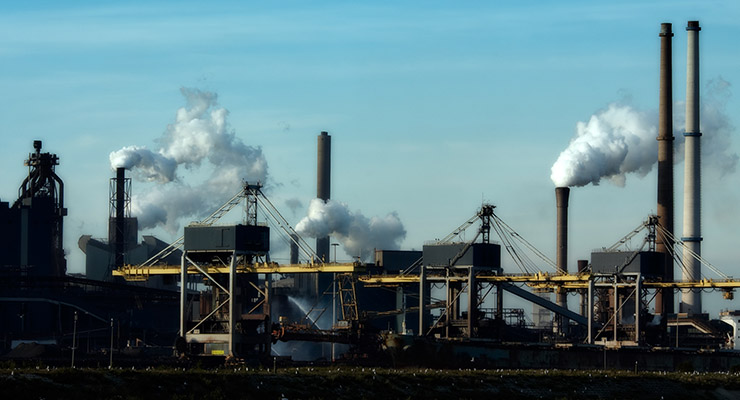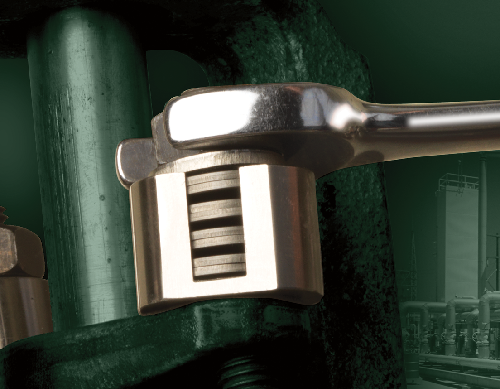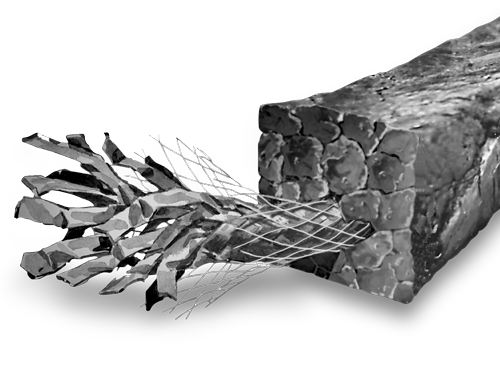Note: As part of our series Extending the Life of Aging Fixed Plant Equipment, this post will focus on how to identify and stop leaking valve stem seals, while Part 2 will address best practices for reducing leaks in flange sealing.
Coping with Older Fixed Equipment
Process plants in Europe and the US are facing some specific challenges. Most of them have installations in operation since the 1950s or 1960s. They face increasing competition from overseas and must run their plants longer between plant stops. Furthermore they have to deal with higher profit expectations and with more stringent health, safety and environmental regulations.
Costs for maintaining plants are rising, and it is a challenge to reduce maintenance costs to ensure sufficient profit margins. To tackle recurring issues it is very important to identify root causes to get an in-depth understanding of the equipment and its failure modes. It is crucial to understand the important factors to consider with regards to sealing aging static equipment. This process can help plants make the right decisions about their aging assets.
Valves as a Source of Industrial Emissions
Between 50-60% of fugitive emissions come from valves. Data published by the European Industrial Emissions Directive and the U.S. Environmental Protection Agency are in agreement on that. Even though product loss is expensive, what really drives the reduction of plant leakage is concern over legislative compliance along with health and safety requirements. Piping, vessels, and heat exchangers are other assets that can cause major headaches with regard to reliability, and this equipment can account for a major part of the maintenance budget.
There are techniques available to make older static equipment comply with current emission regulations and performance expectations. Each type of fixed plant equipment has its specific challenges with regards establishing leak-free operation, whether it be block valves, dynamic valves, pipe flanges, or pressure vessels.
Why Valves Leak
Valve packing is a contact seal and its mechanism relies on maintaining a very small gap between two surfaces, just like with every other seal. In addition, a force is required that keeps the surfaces together.
- In the case of a valve stem packing, it is the packing that has the ability to conform and the elasticity to adapt to the surface of the valve stem to maintain a narrow sealing gap.
- The gland bolts in combination with the internal elasticity of the packing material supply the force to maintain the seal. Failure of the seal occurs when one or both of these requirements cease to be met.
- It is not just a matter of increasing sealing force to improve performance because the undesirable downside of this is that stem friction increases when the sealing force increases.
- The engineering challenge is to find the correct sealing force that forms the balance between having a good seal and acceptable stem friction.
Small valves that are not performing are usually replaced by new valves since this is often more cost-effective than repair. Low emission valves (certified according to API624, ISO15848-1 or TA-Luft) are readily available off the shelf.
However, larger valves often require a bigger investment to get compliant with current regulations. An upgrade of the valve might be the most cost-effective option. There are a number of factors to consider.
Resolving Leakage: Valve Conditions and Design
To make an older valve seal according to the latest emissions requirements, we have to look closer to the mechanisms that affect the seal. There are numerous areas in which sealing reliability can be improved:
Deep Stuffing Boxes: Older valves sometimes have extremely deep stuffing boxes. Deep stuffing boxes were once thought to seal better, but in reality they cause more packing relaxation, high stem friction, and low sealing performance. The ideal number of packing rings in a stuffing box is five. Deep stuffing boxes can be easily improved by installing a metallic or carbon filler bushing.
Bolts/Studs: Gland bolts or studs are crucial in applying the right gland force on the packing set and, therefore, creating the seal. Old corroded and plastically deformed bolts cannot perform this function. Therefore, it is of crucial importance to exchange the studs on an older valve with each replacement of the packing set.
Lubrication: Gland studs and nuts need to be lubricated with a lubricant with a known K-factor or coefficient of friction. Unlubricated bolts have a coefficient of friction that can vary +/- 40%. Lubricated bolts have a variation of +/- 20%. Lubricants need to have a small variation between the wet K nut factor and the dry K nut factor to assure that re-torquing of the valve after some time can happen reliably. They should not be able to be easily washed off. Nickel anti-seizes or similar are the lubricants to use.
Gland Force: Gland studs have in general very low elasticity. Thermal cycling, pressure surges, packing relaxation, wear, or extrusion may cause loss of gland force. In these cases live loading can be applied to improve performance significantly by ensuring the right gland force over a longer period.
Packing Composition: The valve stem and stuffing box condition is crucial to the correct functioning of the valve. Pitting corrosion can occur due to a galvanic reaction between the graphite packing and the valve stem. Therefore high performance graphite valve packing has a passive corrosion inhibitor to prevent these issues.
Valve Stem Conditions: Stem run out should be within certain limits. Stems that are in bad condition should be either replaced or reworked.
Stuffing Box/Gland Nose: The stuffing box bottom should be flat and have no angle. The same applies to the bottom of the gland nose.
The Role of Packing Technology
More stringent legislative requirements with regards to fugitive emissions have led to enormous improvements in the sealing technology for valves over the last 10 years.
- Packing emission testing standards are available so that packing can be compared.
- Modern low emission packing can even bring older valves up to the newest emission requirements.
In summary, even if valves are aging, there is no need to be non-compliant with current industry emissions standards. As outlined above, there are techniques and new technologies available to seal valves and make them perform well. Plants can be upgraded to meet current emissions legislation without major capital investments by extending the life of the equipment that is currently in place.
If you’d like more information on valve packing emissions testing or some of the techniques addressed above, contact our Ask the Expert service.





